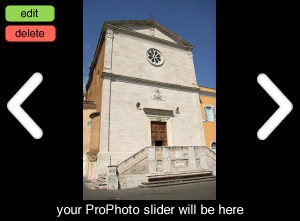Over the last week here in Rome, I had the fortune to visit the church of San Pietro in Montorio on the Janiculum hill with museum director and scholar Peter van der Brink and a Belgian art enthusiast.
San Pietro in Montorio is a favourite for drawing teachers as it’s small courtyard houses a miniaturised example of Renaissance architecture. The tempietto by Donato Bramante bridges the time between pagan Classical Rome and a Christian ‘rebirth’ that sought to pare God with man; It’s great to draw because of its human scale-a model of repeated columns that can be seen recurring on rooftops and temples throughout the city.
What is often neglected by visitors however is the inside of the church; like so many of the churches in Rome, students of art can see paintings in situ that were painted for the very spot.
I was particularly interested in seeing this church with Peter Van der Brink as he is an expert in Dutch Caravaggio-esque painting; an area I am not too familiar with. In San Pietro del Montorio there is a chapel made solely by painters who came from Utrecht during the counter reformation. They were inspired by Caravaggio’s light that came to symbolize the heavenly rays of the Catholic Church – a church not too popular with the rest of Holland in the 1600’s.
One of the problems with Caravaggio-esque paintings in general is that they are quite dark. The process of the chiaroscuro technique is started by an under painting of a middle tonal value with an absorbent earth color.The lights are usually created with an opaque lead white paint that becomes transparent over time. The earth colors being porous tend to swallow up the paint as well.
The three of us walked into the empty San Pietro in Montorio and had barely adjusted our eyes when the church went completely dark. We could make out the architectural putti holding up the frames but nothing more. We started a scramble to find light boxes; those coin operated machines found in many churches to illuminate the darkened works of art but there wasn’t one to be found. By and by there emerged a small priest who didn’t appear to speak Italian. We tried English but no luck either. Every word the three of us tried to think of for the word light in Dutch, French, Italian – licht, lumière, Luce met with a blank dim response.
The priest slowly lifted his arm as if to make a pronouncement. Soundlessly he pointed to a twinkling votive candle near the front of the church. Focusing we saw a small basket teetering on the balustrade of the main altar. Need I say a light bulb went on and we scurried over to deposit all the loose change we could find in our pockets.
As soundlessly as the priest appeared, he then disappeared. A few moments later, the church was vivid with baroque shadows and lights. The priest re-emerged and proved to be fluent in many languages and his knowledge of the objects in the church. He told us about the theft of one of the Dutch paintings in the 17th century and even stumped the experts. He then went on to explain a particularly beautiful chapel with a wall painting of the flagellation of Christ.
Those of you who come to Rome next summer to study drawing with me in the Rome Art Program will be thus enlightened as I was.
Frances Middendorf, Drawing Instrutor, Rome Art Program
 Over the last week here in Rome, I had the fortune to visit the church of San Pietro in Montorio on the Janiculum hill with museum director and scholar Peter van der Brink and a Belgian art enthusiast.
Over the last week here in Rome, I had the fortune to visit the church of San Pietro in Montorio on the Janiculum hill with museum director and scholar Peter van der Brink and a Belgian art enthusiast.